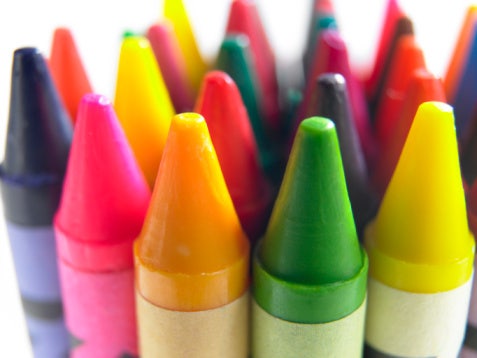
Fun tips to turn your child's frown upside down.
By Laura Dessauer and This Emotional Life — Written on Sep 07, 2011

Depression impacts 11.2 percent of 13 to 18 year olds in the U.S. according to the National Institute of Mental Health, and 3.3 percent have experienced seriously debilitating symptoms of depression. The Centers for Disease Control and Prevention reports that 3.7 percent of children between the ages of 8 and 15 have a mood disorder, with girls being diagnosed more frequently than boys.
Children's depression can look different than adult depression. If your child is not acting like him/herself, if he/she is lethargic and have lost interest in activities that once made them happy, if he/she is overly clingy, frequently reporting feeling sick, refusing to go to school or get in trouble at school, sleeping excessively or is excessively moody, there may be something more happening with your child.
So what course of action should you take if your child is suffering from depression? The Treatment for Adolescents with Depression Study evaluated the effectiveness of cognitive behavior therapy (CBT). The latest research suggests therapy and medication may be the most rapid form of effective treatment for childhood depression, although over time therapy alone is just as successful.
The Treatment for Adolescents with Depression Study evaluated the effectiveness of cognitive behavior therapy (CBT) therapy alone, medication alone, combined medication and cognitive behavior therapy treatment and placebo (sugar pill) treatments for adolescents 12 to 17 with depression. The combination of medication and therapy worked the most rapidly, although therapeutic treatment alone over months has a similar impact to the combination of therapy and medications. How To Manage Depression Without Meds
What is cognitive behavior therapy (CBT) and how can it help your child to overcome the challenges of depression? CBT is a therapy that teaches an individual how to manage their thoughts, behaviors, and feelings through education while testing new behaviors and assumptions. According to the National Institute of Mental Health, treatment may include learning how to set realistic and positive personal goals, encourage participation in pleasant activities, discourage negative thoughts, solve social problems, negotiate and compromise when conflicts arise, and foster assertiveness.
If you feel that your child is just starting to demonstrate signs of depression and you’d like to begin the process of helping them manage their feelings, try any of these three coping strategies:
1. Design a creativity journal. Go shopping with your child and pick out a journal they like, or go to the arts and crafts store and find a blank artists journal and create an individualized cover using magazine images, old greeting cards, wallpaper samples, or scrapbook papers. Embellish with unique words and images that represent your child. Let your child know this is a safe place for them to express their thoughts and feelings without feeling like they have to censor words and images.
More Juicy Content From YourTango:
- 5 Ways You Can Help Yourself Deal With Depression
- How To Deal With Depression: 4 Simple Solutions
- How To Be Happy: It's A Process
2. Create a feelings box. Something as simple as a shoebox can be decorated with images or words that feel empowering. Allow your child to use the box as a safe place to put their worries, anger, anxiety, fears, and frustrations. Cut up slips of paper and add words or images of things that bother your child, and then have your child add these to their feelings box and "close the lid" as they let those feelings go. This teaches your child to respectfully acknowledge their feelings and let them go.
3. Make a mask. Go to the arts and crafts store and find a papier-mâché mask, or for younger children you can use a paper plate or craft paper and cut out a mask shape. Ask your child to create an image of what they choose to show other people on the outside of the mask, and what they keep to themselves in the inside of the mask. Younger children may need to have this modified by asking them to create on the inside of the mask what makes they sad or choose a color that represent how they feel when they are sad and on outside of the mask choose images or colors of feeling strong, brave, or happy.
Often children and teens feel like they have to mask their feelings so they do not upset others. Allow your child to create their masks without censorship. Ask your child to tell you about it if they choose to, then listen without judgment.
Seeking professional help is essential for a child who is experiencing depression. As a parent look for therapists who specialize in working with children and adolescents, and who utilize cognitive behavioral therapies that teach your child appropriate ways to positively express their thoughts, feelings and behaviors.
Related Stories From YourTango:
If you need more support, art therapy can help. Learn the secrets to creatively help your child manage their behaviors and communicate their feelings.
More for You:
Receive a free audio mini-course Secrets Your Kids Really Don't Want You to Know: A Child Art Therapist Tells All (except for the confidential stuff).
